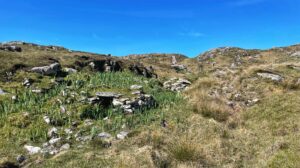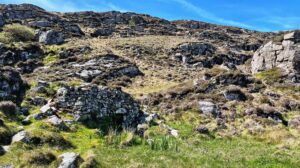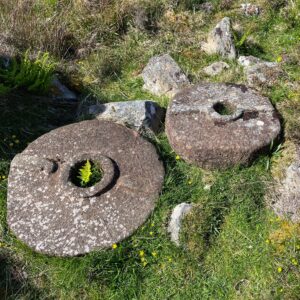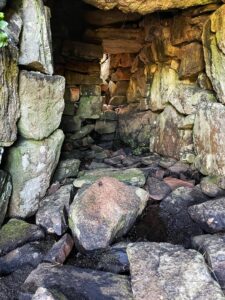
A day of water-mills—horizontal ones, no less. We visited eight, or so I believe; one quickly loses count. It took me some time to grasp how they worked. The water wheel sits flat in a channel, its blades catching the water and spinning the millstone directly above. No gears, just force and gravity.

The mills lay in two clusters—three in one stream, five in another—both near Valtos. Built of drystone rubble, they now stand in varying states of collapse. Turf roofs once covered them, though none remain. Many still have their ‘lade’, the man-made channel that once carried the water, but nature has long reclaimed the flow.

One thing I have yet to answer is whether the mills were used all at once or in succession over centuries. A key advantage of the horizontal design is that water could be passed from one mill to the next. This suggests simultaneous use. I imagine the mills operating seasonally, with water dammed in the loch above, then released for short, frenzied bursts of milling. Turning a millstone takes power, and a trickle of a stream does not oblige.

These mills are often called Norse mills, named for their link to Norse settlements in Scotland’s Northern Isles. They may have older origins, but it was the Norse who brought them here and made them work.
